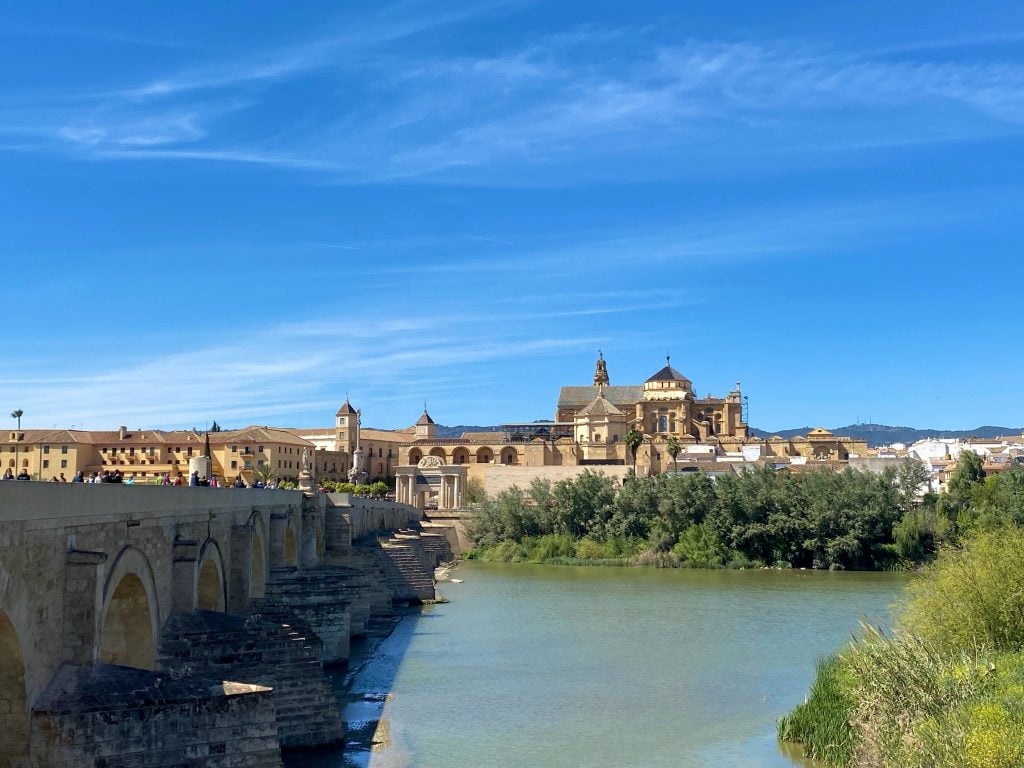Índice Contenido
Romans, Muslims, Jews and Christians have left a deep vestige in the heritage, culture and traditions of this historic city.
Here we will know the history of the Romans’ passage through the city of Cordoba and the route to know the monuments that still remain in it.
Roman Cordoba
In the middle of the second century B.C. Cordoba was founded as a Roman City, attributed to the consul Claudius Marcellus. During the time of Roman occupation the Jews were already in Cordoba and enjoyed enormous freedom of worship and great permissiveness by the then dominant civilization.
History
Cordoba soon reached an important place in Roman Hispania, becoming the capital of the province of Baetica around 27 B.C. and later around 13 B.C. it acquired the rank of Colonia Patricia, due to its geographical, commercial and strategic importance.
Cordoba became a relevant administrative center playing an important role supporting Pompey during the civil war between Pompey and Caesar in the battle of the plains of Munda in the first century B.C. It was after Caesar’s victory that the city was partially destroyed, but it recovered quickly and lived a period of economic, political and cultural plenitude until the third century.
However, we do not preserve much of this Roman Cordoba today, only some remains of its urban entity and some monuments.
Route of Roman Cordoba
One of the best known Roman monuments of Cordoba and from where we will begin our route is the Roman Bridge over the Guadalquivir River built in the first century BC and for twenty centuries was the only one that crossed the river. To reach it we can go on foot or by bus on Aucorsa lines 3 and 7.
The Roman Bridge has 16 arches, although originally there were 17, four of them pointed and the rest semicircular. In the center we will find the sculpture of San Rafael, a work of the sixteenth century. The bridge has undergone several remodeling works throughout history, being its main structure from the Middle Ages, and its most recent intervention in 1876.

To the right of the Roman Bridge we can see the mill of Albolafia, rebuilt in the first half of the tenth century, is a water mill that has a restored waterwheel, in order to raise the river water to the palace through an ingenious aqueduct, but originally the waterwheel was ordered to dismantle by Queen Isabella the Catholic because of the noise it produced.
Going up San Fernando Street we will arrive at the Roman Temple in Claudio Marcelo Street, next to the Town Hall. It is the only Roman temple of which archaeological evidence has arrived, dedicated to the imperial cult and was one of the largest temples of the time. It was part of the Provincial Forum together with a circus. It was originally elevated on a podium and had six free Corinthian columns at its entrance. In front of it stood the altar or altar. Its reconstruction was carried out by the architect Félix Hernández. Today only 11 of its columns are still standing and can be visited from the street and some of the other original pieces of the temple are on display at the Archaeological Museum.
Finally, going up the Plaza Tendillas in the Paseo de la Victoria we find the Roman Mausoleum of Cordoba, discovered in 1993, is a Roman funerary construction of the fourth of the first century A.D. where in Roman times was the western gate of the city. The Mausoleum consisted of two areas, an area in which the corpse was arranged and, separated by a wall, a room in which they proceeded to cremation. It is a monument of great dimensions and cylindrical structure, it is thought that it could have been designed by an Italic architect, taking as reference other mausoleums of the imperial capital.

